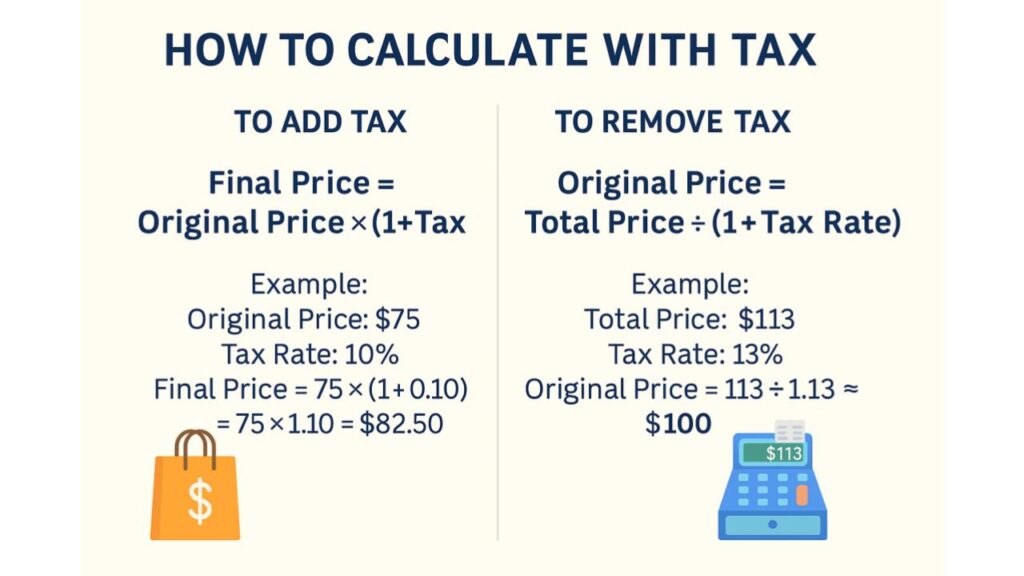When you’re buying groceries, running an online business, or managing invoices, knowing how to calculate with tax is important.
This guide walks you through how to add tax to a price and how to remove tax from a total, with examples and a calculator.
🙋♀️ What Does “With Tax” Mean?
A price with tax includes the original price of the item plus a percentage added as sales tax or value-added tax (VAT). This rate varies depending on your country or region.
For example, if an item costs $100 and the tax rate is 13%, the price with tax is:
$100 + ($100 × 13%) = $113✏️ How to Add Tax to a Price
Here’s the formula:
Final Price = Original Price × (1 + Tax Rate)Example:
Original Price = $75
Tax Rate = 10% = 0.10
Final Price = 75 × (1 + 0.10) = 75 × 1.10 = $82.50🔄 How to Remove Tax from a Price
If you know the total price including tax, you can find the original price like this:
Original Price = Total Price ÷ (1 + Tax Rate)Example:
Total Price = $113
Tax Rate = 13% = 0.13
Original Price = 113 ÷ 1.13 ≈ $100
📦 When to Use Tax Calculations
- Consumers: To estimate the final price when shopping
- Business owners: To create accurate invoices
- Freelancers: To understand how much tax you’re collecting
- Accountants: To break down totals for reporting
💡 Pro Tips
- Always convert percentages to decimals in calculations (e.g., 15% = 0.15)
- Use a calculator for quick and error-free results
- Confirm your local tax rate—many regions have different rates for different items